Vietnam: LJIP Vitalizes the Sleepy Town
by Cheng Qingyun
[Vietnam] VUONG THI THUY HUYEN
A memorable experience awaited Weng Mingzhao, board chair of the Long Jiang Industrial Park Development Co. Ltd., when he arrived in Tien Giang Province in southern Vietnam 12 years ago.
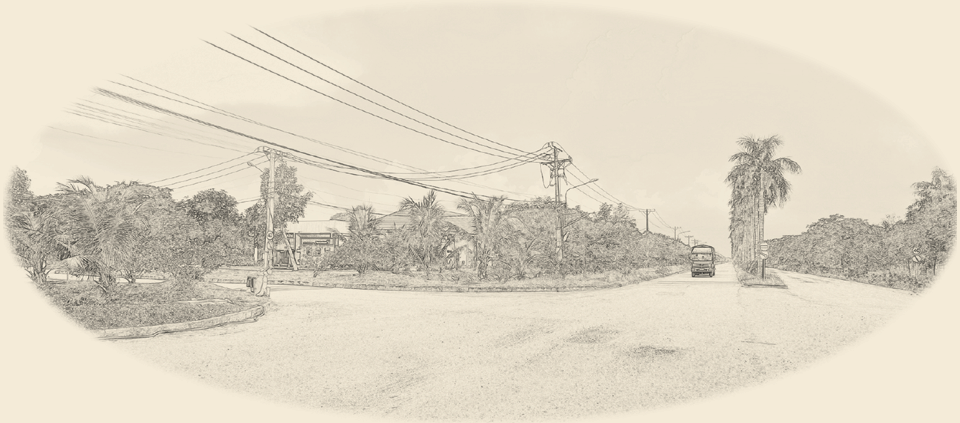
"After I got off the bus, I had to ride a motorbike part of the way and then the road ended. There were only endless pineapple fields. So I walked," Weng recalled.
There has been a sea change since then. The pineapple fields have made way for the 6-square-kilometer Long Jiang Industrial Park (LJIP), which is connected to bustling highways. At the entrance of the park, signs in Vietnamese, Chinese and English greet visitors. Inside, there are rows of modern factory buildings and loaded container trucks shuttling to and fro.
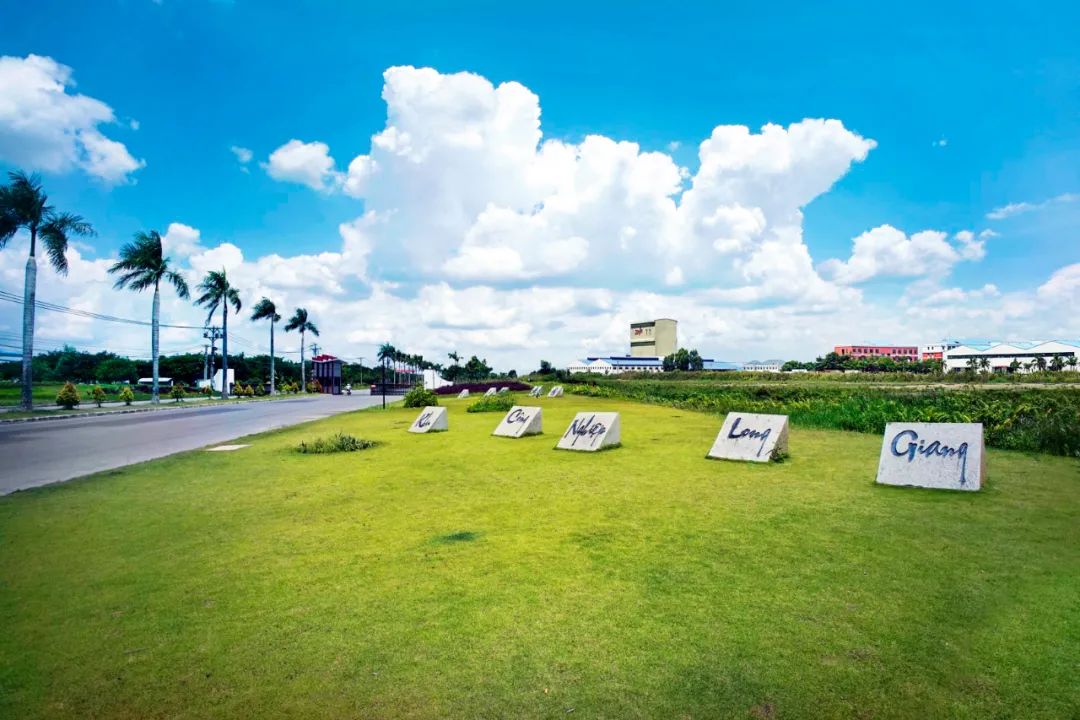
At the entrance of the Long Jiang Industrial Park
No More Labor Drain
At that time Tien Giang was a major agricultural province with a weak industrial foundation. There were around 800,000 people of workable age within a 15-kilometer diameter of the planned site of the industrial park. However, as the province could provide less than 5,000 industrial jobs every year, most of the young people had left to seek jobs elsewhere.
How to bring them back?
Since its inception in 2007, the LJIP followed the strategy of localization – preferential hiring of local workers and getting a local management team to operate the park efficiently.
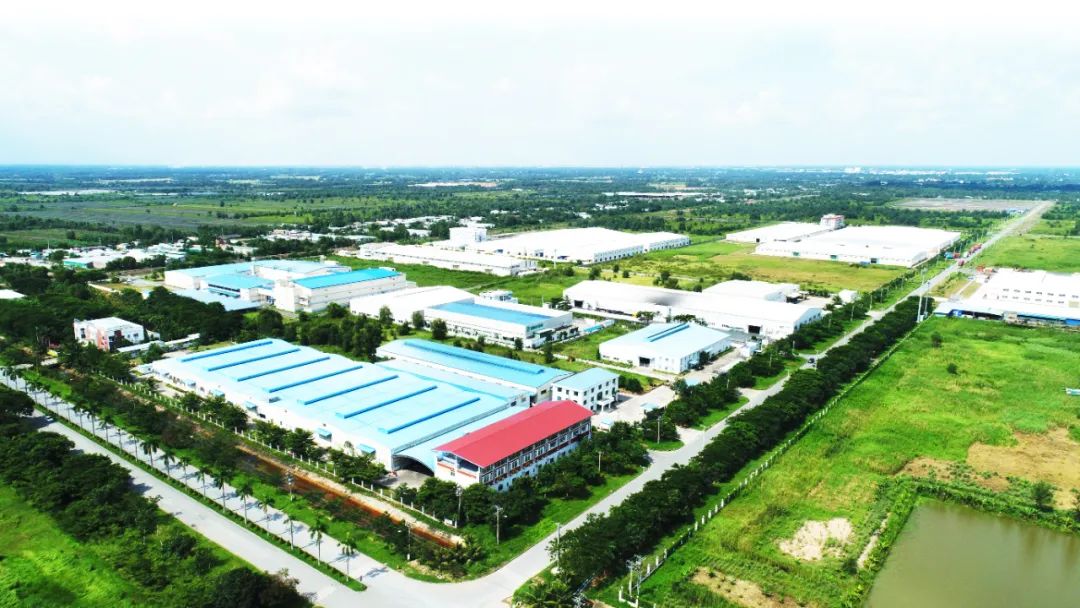
A bird's-eye view of the Long Jiang Industrial Park
"From being nobody to getting somewhere." This is how Tran Ngoc Dung summarizes her 10 years at the LJIP as human resources manager. After graduating as a major in Chinese from a prestigious university in 2008, she passed up an opportunity to work in Ho Chi Minh City, the economic center of southern Vietnam, and returned to her hometown instead to join the newly-founded LJIP.
"When I was in university, there were few Chinese companies in Tien Giang, and the LJIP was new. My family was concerned it might not have a promising future. But I insisted on joining the company since I believed in its development philosophy. I have now been promoted to the managerial team. Moreover, my family runs a language training center. All these prove that I made the right choice," she said.
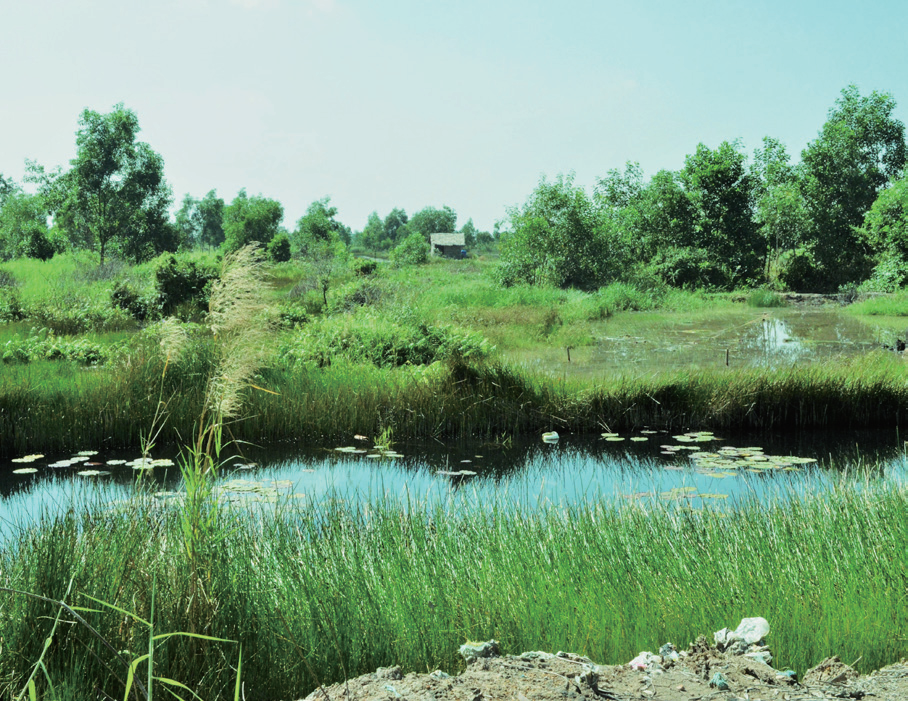
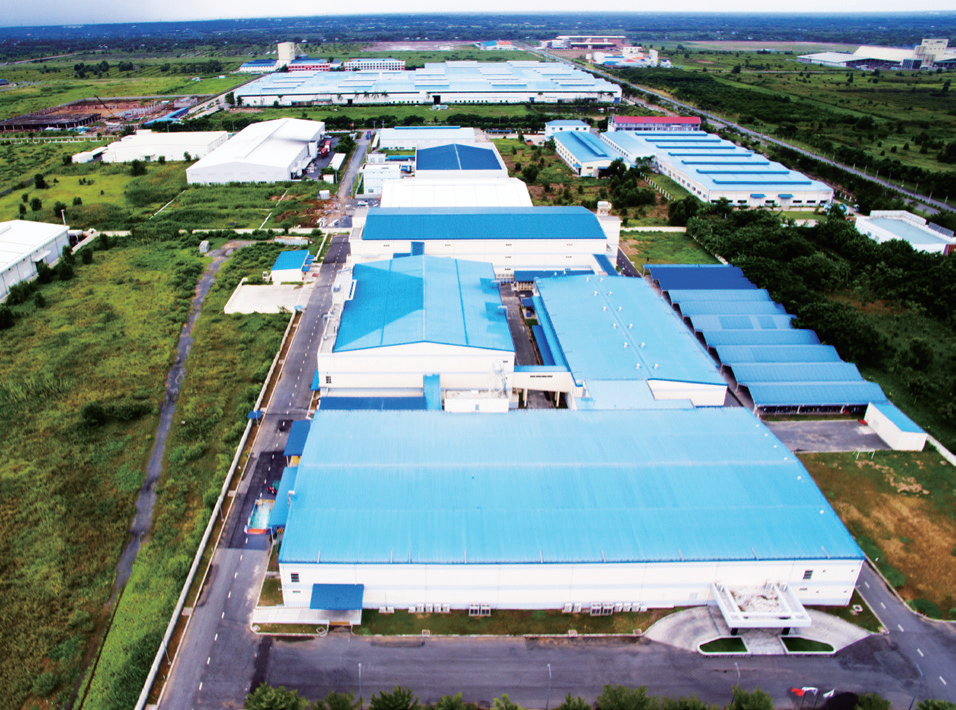
The Long Jiang Industrial Park, in the past and today
More and more local Vietnamese have chosen to work at the LJIP and contribute to the development of their hometown. Local farmers have become skilled factory workers. The generous pay and perks at the industrial park also attract migrant workers from neighboring counties and provinces.
The LJIP has created jobs and trained personnel. Its backbone staff received training in China and other countries and the skills have improved the overall labor quality in the region.
Nguyen Thi Thu Ngan joined Founder Motor (Vietnam) Co., a Chinese company in the industrial park, after graduating from Ho Chi Minh High School six years ago. Now she is a field director.
"When I started to work here, I did not know how to mix with people, let alone know anything about management. But my company provided wide-ranging training, including management skills and quality assurance. I learned how to handle the differently-natured staff under me, mobilize their initiative, increase their work efficiency, and make them feel happy at work," Huang said.
She is from another province, Ben Tre Province, but has settled down in Tien Giang, ready to contribute to the park's development. In the past she was mostly concerned about her salary but now she has developed a bond with her company.
Quality Products Enter the International Market
Tien Giang is part of the economic circle of Ho Chi Minh City. The international cargo port at Ho Chi Minh provides the province convenient transportation for its exports. After the industrial park was completed in 2007, it introduced advanced technologies. The previously weak manufacturing industry, which had failed to utilize the province's geographical advantages, has been growing fast. Local products are now sent to other parts of the world through international shipping.
Founder Motor (Vietnam) is a high-tech company specializing in research and development, production and marketing of miniature special motors. It mainly produces motors used in computerized auto and other sewing machines and automobiles. It exports 45 percent of its output to over 70 countries and regions in Europe, America, the Middle East and Southeast Asia.
The company has an annual output of 3.5-4 million sewing machine motors, with a global market share of 40-50 percent. As the company's market share goes up, its employees have seen a significant increase in their pay.
The production manager of the company said the industrial park provides all the supporting services they need. "We need to only focus on production."
To modernize its industries, the Vietnamese Government has intensified efforts to attract high-tech and manufacturing enterprises and investment. In response, the industrial park has been bringing in textile, machinery, electronics, construction materials and packaging industries, promoting technological progress and improving corporate management.
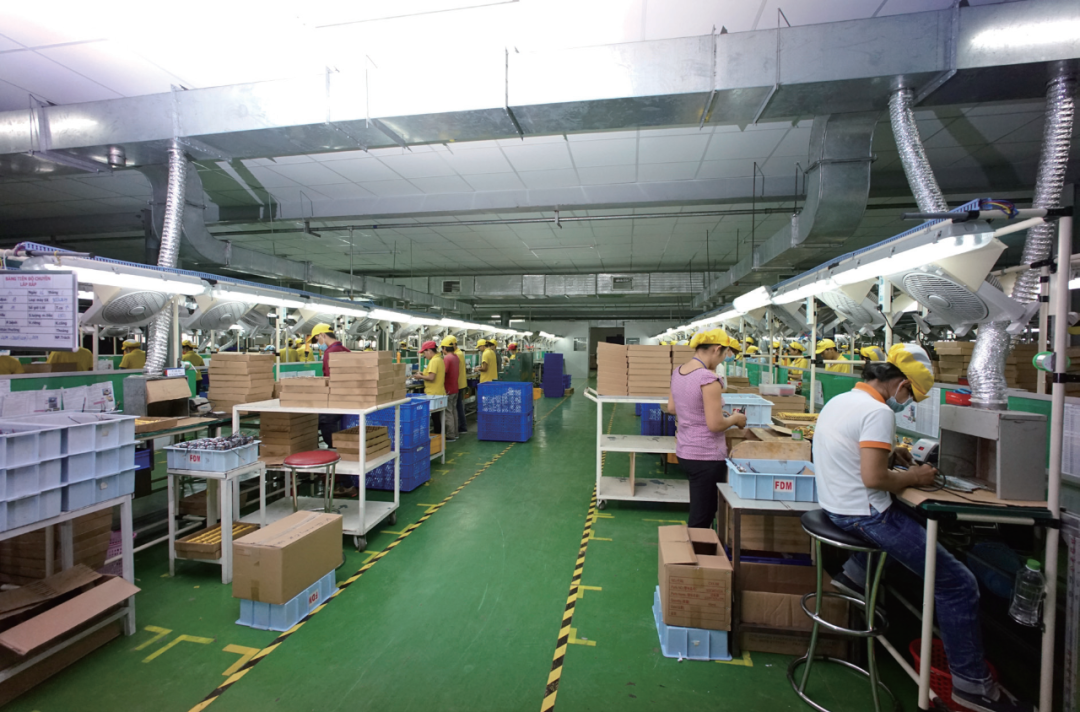
Working at a production line at Founder Motor (Vietnam)
It enforces a high threshold for the enterprises operating from the park and is committed to environmental protection. It brought in horticulturists to create a customized garden-style industrial park, which currently has 20,000 fruit and flower trees.
Meeting of Minds
Intermarriages are common among the employees at the industrial park. There are at least 10 Chinese-Vietnamese couples.
Ren's family is one of them. Ren, who is Chinese, is a senior manager with the Hailiang Group (Vietnam), and his wife is Vietnamese. They met at work, fell in love, and got married.
The trend will continue, because learning the Chinese language and about the traditional Chinese culture has become increasingly popular among local residents. The increase in intermarriages shows to certain extent that the Chinese enterprises in LJIP have taken root in Vietnam. But more importantly is to make the locals enjoy lasting prosperity.
As its corporate social responsibility, the LJIP has built roads and bridges for the local community, houses for impoverished families who used to live in thatched huts, and provides scholarships to students from poor families. During festivals, the Chinese enterprises in the park visit local families facing economic difficulties, and give them cash gifts and daily supplies such as rice, salt and edible oil.
The LJIP is implementing China's targeted poverty alleviation initiative in Vietnam. One of the companies in the industrial park, Vietnam Yongfeng Packaging Co. Ltd., produces woven bags. The bags are made by local elderly people and people with disabilities. The company sends the raw materials to them, collects the finished products, and pays them according to the number of bags. This measure increases the income of poor people and has been appreciated by the local government.
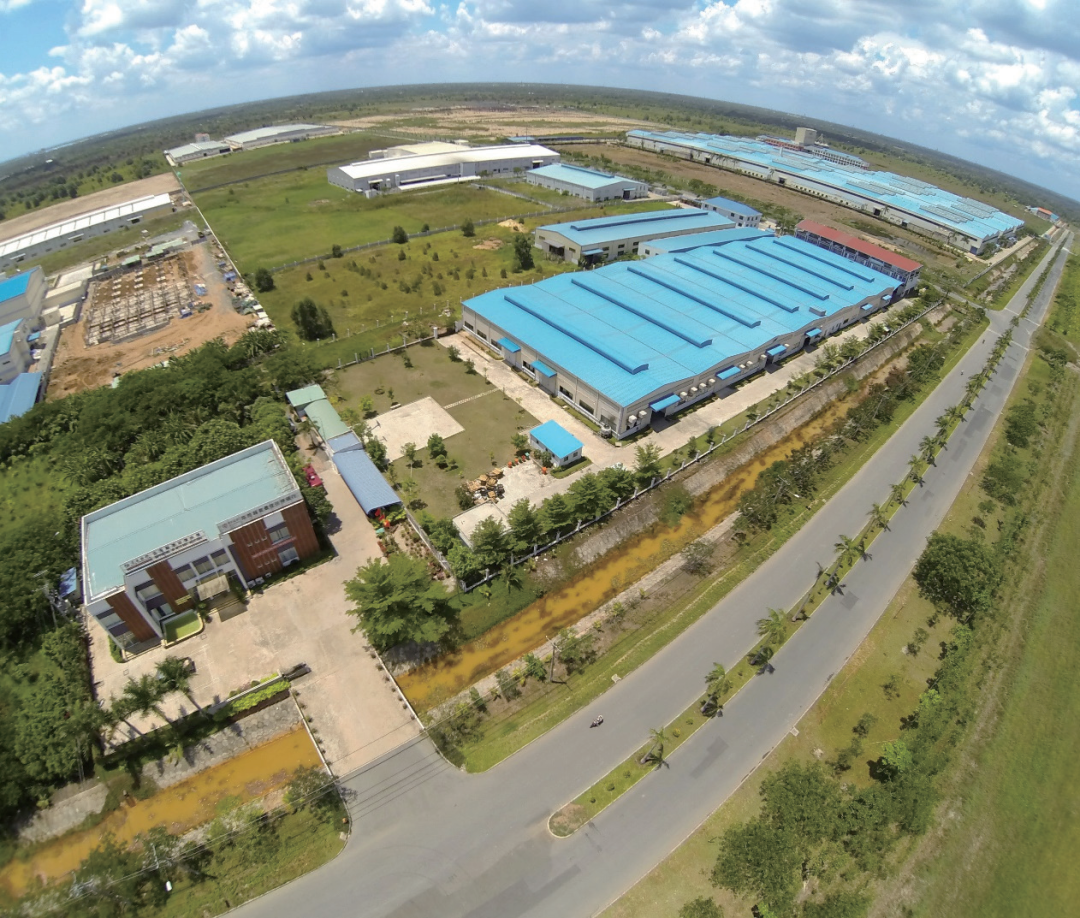
The LJIP boulevard
The LJIP has won many awards such as "Best Brand on the Mekong River Delta", "Outstanding Contributor to Economic Growth", "Prominent Contributor to Charity", and "Charity Award for Assistance to Victims of Agent Orange".
More and more local residents have opened restaurants and stores around the industrial park, growing with its growth.
FOR MORE
Project Overview:
The Long Jiang Industrial Park, an investment of Qianjiang Investment Management Co. Ltd. from eastern China's Zhejiang Province, has a planned area of 6 sq km, comprising a 5.4-sq-km industrial zone and a 0.6-sq-km service zone. The total investment is estimated to be USD150 million. By far USD70 million has been invested for land leveling, afforestation, roads, a water supply and sewage network, sewage treatment stations, a power supply system, a gas supply system, standard factory buildings and a flying pier in order to satisfy the needs of the enterprises in the park.
By September 2020, the LJIP had developed 4.8 sq km in the industrial zone and leased 3 sq km. The park has 46 enterprises with a total investment of USD1.28 billion. It has an output of USD2.7 billion during the period of January-September 2020, with a total of 23,300 non-Chinese employees.


